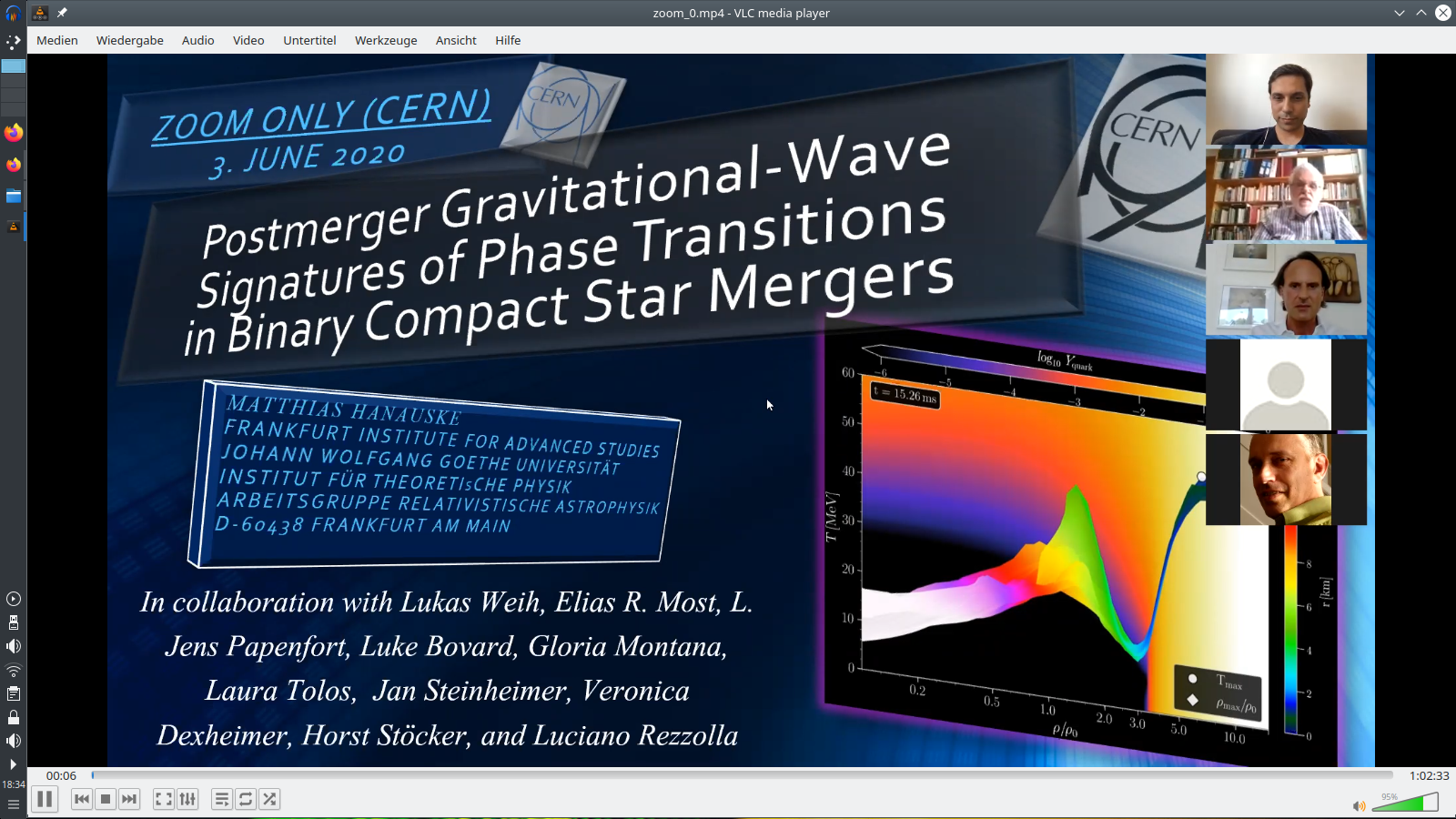TH Cosmo Coffee
Wednesday 3 June 2020, 16:30 --18:00 Europe/Zurich

To see the presentation, please click on the picture above. I would like to thank Eero Aleksi Kurkela for inviting me and the organisors, especially Marko Simonovic, for their good support and for recording the presentation. I would also like to thank Marko Simonovic, Peter Otto Hess and Mark Alford for their permission to put the video online.
Postmerger Gravitational-Wave Signatures of Phase Transitions in Binary Compact Star Mergers
With the first detection of gravitational waves from a binary system of neutron stars GW170817, a new window was opened to study the properties of matter at and above nuclear-saturation density. Reaching densities a few times that of nuclear matter and temperatures up to 100 MeV, such mergers also represent potential sites for a phase transition (PT) from confined hadronic matter to deconfined quark matter. Especially during the postmerger evolution of the produced hypermassive/supramassive hybrid star (HMHS/SMHS) the occurrence of a "delayed PT" might give a clear gravitational wave signature of the production of quark matter in the present Universe, if the PT is strong enough. The appearance of a hadron to quark PT in the interior region of the HMHS/SMHS and its conjunction with the spectral properties of the emitted gravitational wave will be in the focus of this talk. The presented results are based on fully general-relativistic hydrodynamic simulations and employing several suitably constructed equation of states that include a PT (see Phys.Rev.Lett. 122, 061101 (2019), Phys.Rev.Lett. 124, 171103 (2020)).

Up coming events

Under construction!